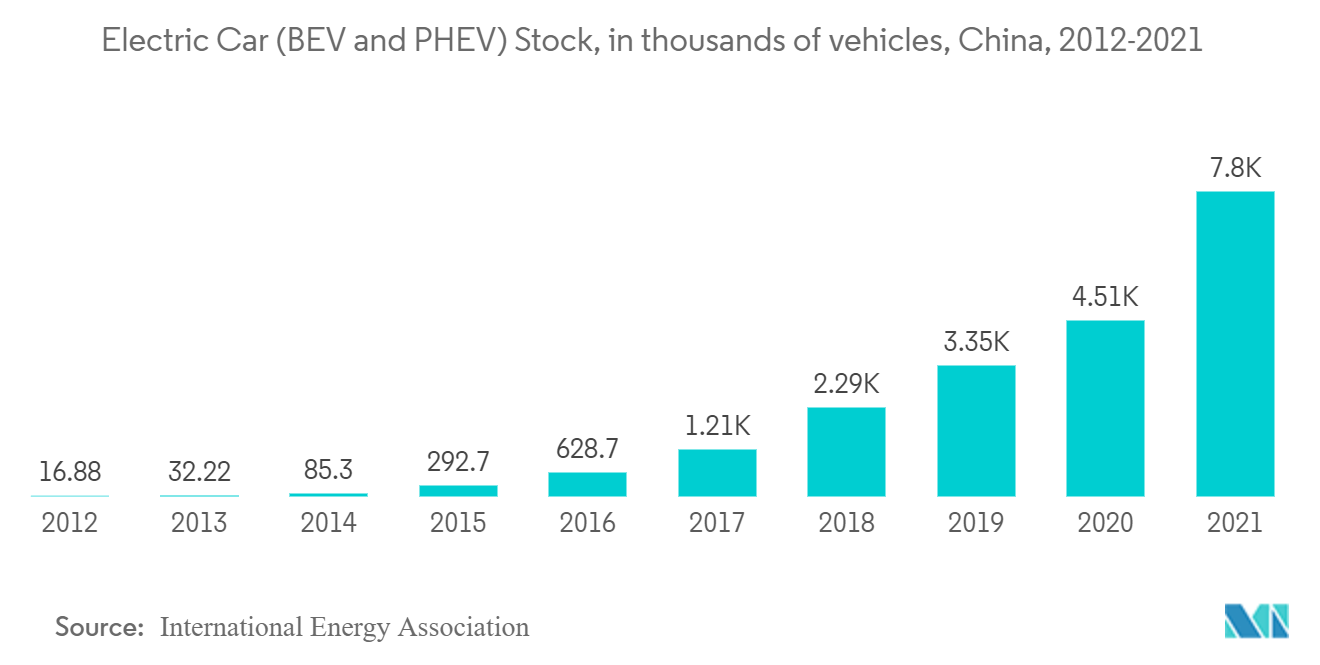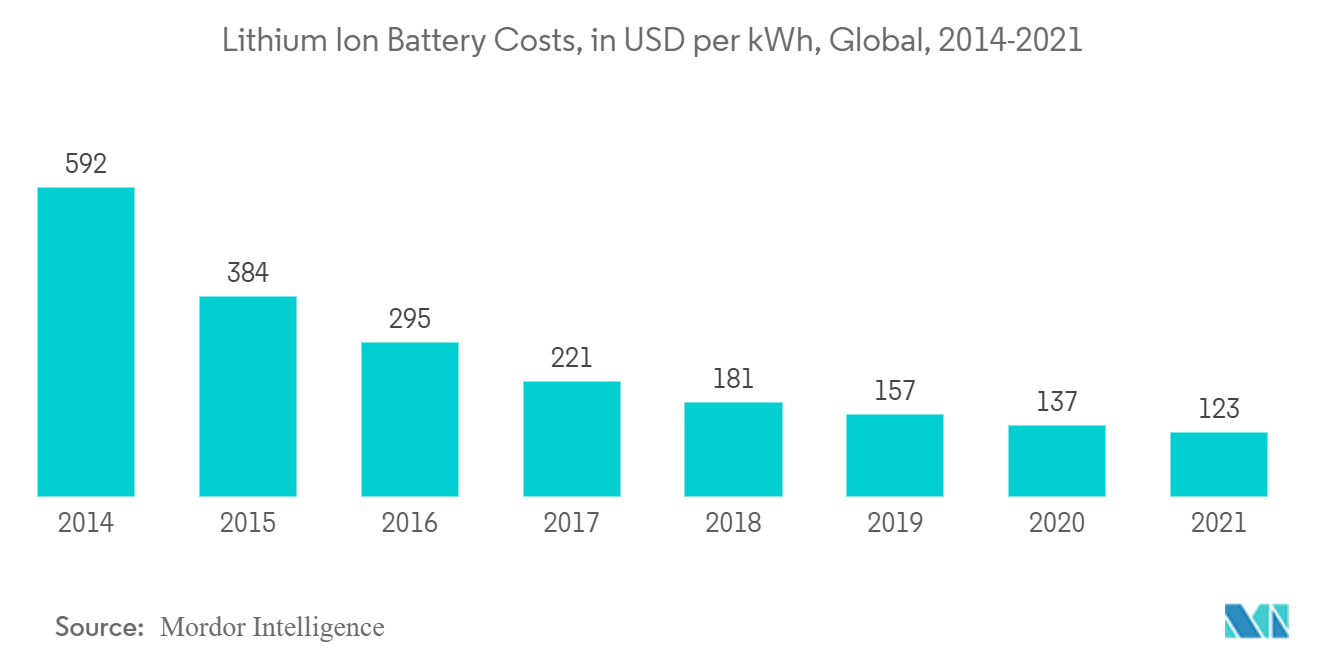Market Trends of China Battery Industry
This section covers the major market trends shaping the China Battery Market according to our research experts:
The Automotive Batteries Segment is Expected to Witness Significant Demand
- The automotive sector is expected to be one of the major end-user segments for lithium-ion batteries soon. The penetration of electric vehicles is anticipated to provide a massive impetus for the lithium-ion battery industry's growth.
- Automobile uses a battery as a secondary power unit to power its components or support the engine while cranking. Lead-acid batteries and nickel-metal-hydride batteries are primarily used in conventional automobiles, while lithium-ion batteries are used in electric vehicles.
- The electric vehicle (EV) industry has adopted lithium-ion batteries due to the same reasons for which these batteries are used in consumer electronics. The fast growth of the EV industry in recent years has resulted in the automobile sector replacing the consumer electronics sector as the leading consumer of lithium-ion batteries.
- China is the largest market for electric vehicles (EV), and it is expected to remain the world's largest electric car market.
- Earlier, foreign automakers faced a 25% import tariff, or they were required to build a factory in China with a cap of 50% ownership. In January 2022, the 50% ownership rule was relaxed for passenger cars, added to which the rules restricting a foreign company from establishing more than two joint ventures producing similar vehicles in the country were also removed.
- Furthermore, the government of China is expected to cut subsidies on electric vehicles by 30% in 2022 and completely eliminate it by the end of the year, as the electric vehicle industry in the country is now successful. The planned subsidy cut is aimed at reducing the reliance of manufacturers on government funds for the development of new technologies and vehicles. Electric vehicle makers are expected to be the first to benefit from this change, thus increasing the demand in the automotive batteries segment.
- Therefore, based on the above-mentioned factors, automotive batteries are expected to witness significant growth during the forecast period.

Declining Lithium-ion Battery Prices May Drive the Market
- The price of lithium-ion batteries has fallen steeply over the past ten years. In 2021, the lithium-ion battery price was USD 132 per kWh. Lithium-ion battery prices are falling continuously, and the price decreased by 10.2% year-on-year in comparison to 12.2% in 2019.
- An increase in production volume, particularly in China, helped in achieving the economies of scale in lithium-ion battery manufacturing. In addition to these, the large capacity additions also increased the competition among manufacturers, further declining the prices but at the expense of the profitability of the manufacturers.
- The battery manufacturers in Asia-Pacific, particularly in China, have even lower prices than the global average prices. One of the major causes of lower prices in China is lower labor costs.
- Hence, lithium-ion batteries are expected to dominate the overall battery market over the next ten years, as they are widely used in cell phones, tablets, and laptops, among other gadgets, whose demand has been increasing at a significant rate globally, especially in countries like China, India, etc.
- The share of China in lithium-ion battery manufacturing is growing rapidly, with manufacturers like CATL registering the highest revenue and battery production growth among the top lithium-ion battery manufacturers. The increasing share of China in lithium-ion battery manufacturing is expected to support a further decline in the Li-ion battery costs.
- This sharp and sustained cost reduction is expected to help cement lithium-ion as the battery chemistry of choice in all energy storage markets, including grid-scale, behind-the-meter storage, residential storage, and micro-grids. Additionally, falling battery prices are expected to bring price-competitive electric vehicles to all the major light-duty vehicle segments before 2030, ushering in a period of intense growth for electric vehicles.
- Hence, the continuous declining cost, leading to the widespread use of lithium-ion batteries, is expected to drive the market growth during the forecast period.


